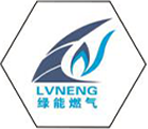
Aug . 30, 2024 11:21
Back to list
Relief Valves
Understanding Relief Valves A Critical Component in Pressure Management
Relief valves play a pivotal role in various industrial applications by ensuring the safe management of pressure in systems that handle liquids and gases. Their primary function is to prevent excessive pressure buildup, which could lead to catastrophic failures, equipment damage, or even serious safety hazards. This article delves into the significance of relief valves, their working principles, types, and applications, emphasizing why they are essential components in modern engineering practices.
Working Principle
Relief valves operate based on the principle of pressure differential. When the pressure within a system exceeds a predetermined set point, the valve opens to allow fluid to escape, thereby reducing the pressure. Once the pressure drops to a safe level, the valve automatically closes. This automatic response is crucial for maintaining safe operational conditions without the need for constant manual monitoring.
The design of relief valves usually includes a spring-loaded mechanism. The spring tension is adjustable, allowing for customization based on the application requirements. When the system pressure overcomes the spring force, the valve opens. This design ensures quick and effective pressure relief, which is vital in processes where pressure fluctuations can occur rapidly.
Types of Relief Valves
There are several types of relief valves, each tailored to specific applications and pressure management needs
. The most common types include1. Pressure Relief Valves (PRVs) These are primarily used in liquid systems and are designed to open at a certain pressure to protect equipment from damage due to overpressure.
relief valves

2. Safety Relief Valves Often found in gas systems, these valves provide a means to release pressure quickly and safely. They are critical in preventing explosions and other hazards associated with overpressurization.
3. Safety Valves These are similar to safety relief valves but are typically used in steam systems. They are designed to release excess steam pressure automatically.
4. Pilot-Operated Relief Valves These valves use a small pilot valve to control the larger main valve. They offer more precise control and are suitable for high-flow applications.
Applications
Relief valves are employed across various industries, including oil and gas, chemical manufacturing, power generation, and water treatment. In the oil and gas sector, for instance, relief valves are crucial in drilling operations and refinery processes, where managing pressure is vital for safety and efficiency. Similarly, in power plants, they help maintain pressure within steam systems, preventing potential explosions.
In addition to industrial applications, relief valves are also found in everyday appliances, such as water heaters and pressure cookers, where they ensure safe operation by preventing pressure accumulations.
Conclusion
In conclusion, relief valves are an essential component in maintaining safety and stability in pressure systems across various industries. Their ability to automatically manage pressure fluctuations helps prevent accidents and equipment damage, underscoring their importance in engineering and safety protocols. Understanding the types and functions of relief valves is crucial for anyone involved in system design, maintenance, or operation. As industries continue to evolve and innovate, the significance of reliable and efficient pressure management systems, including effective relief valves, will only grow.
Latest news
-
Safety Valve Spring-Loaded Design Overpressure ProtectionNewsJul.25,2025
-
Precision Voltage Regulator AC5 Accuracy Grade PerformanceNewsJul.25,2025
-
Natural Gas Pressure Regulating Skid Industrial Pipeline ApplicationsNewsJul.25,2025
-
Natural Gas Filter Stainless Steel Mesh Element DesignNewsJul.25,2025
-
Gas Pressure Regulator Valve Direct-Acting Spring-Loaded DesignNewsJul.25,2025
-
Decompression Equipment Multi-Stage Heat Exchange System DesignNewsJul.25,2025

